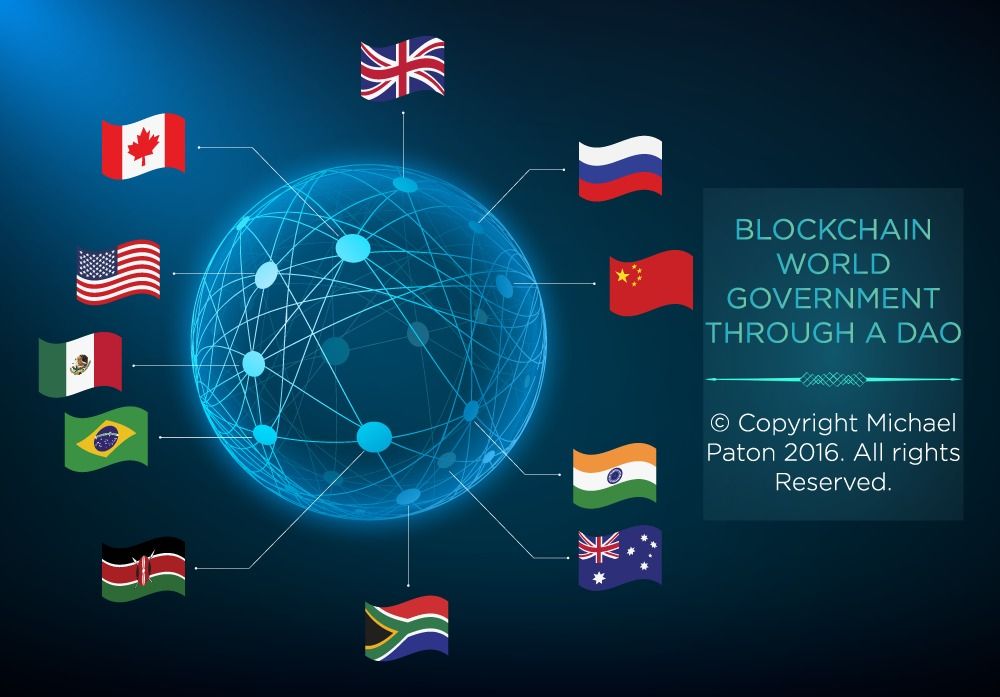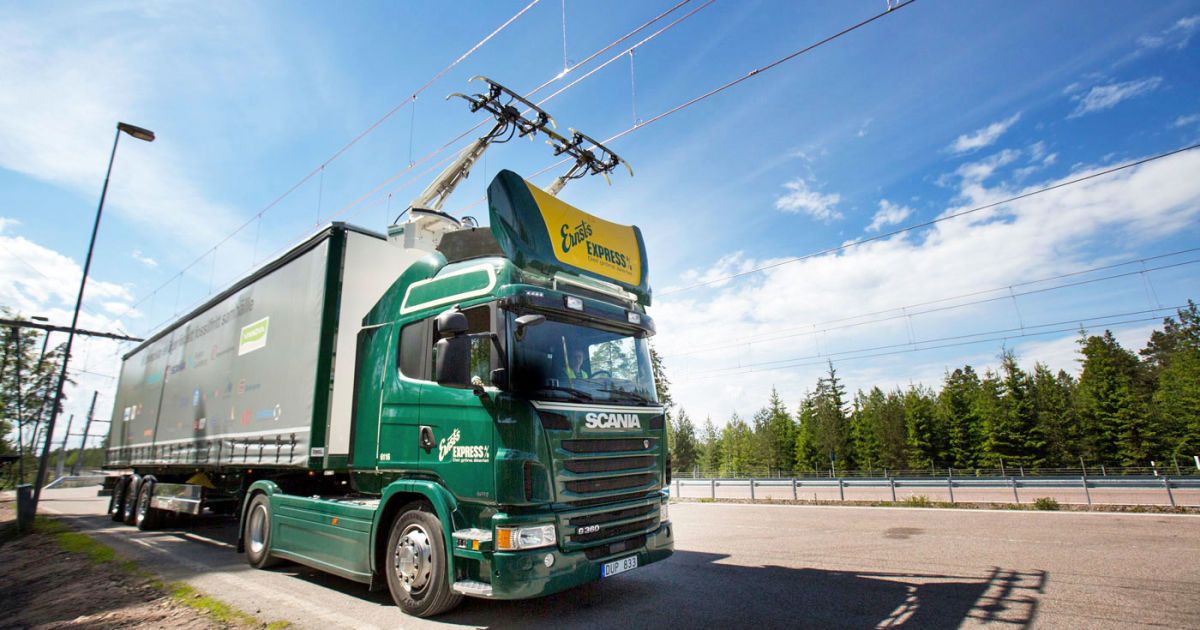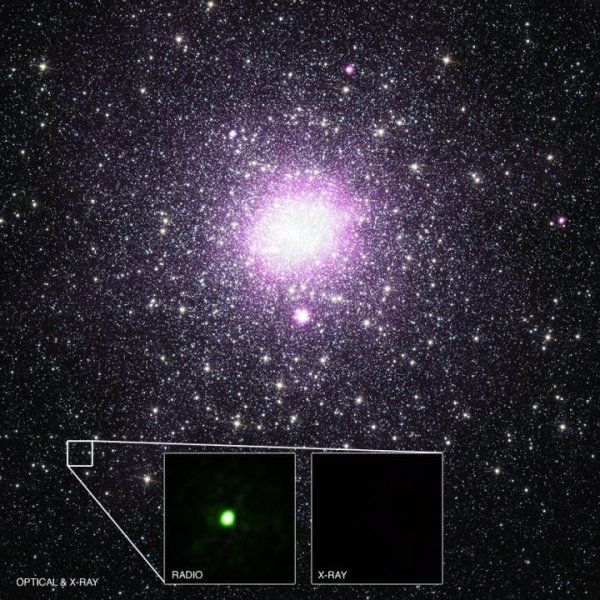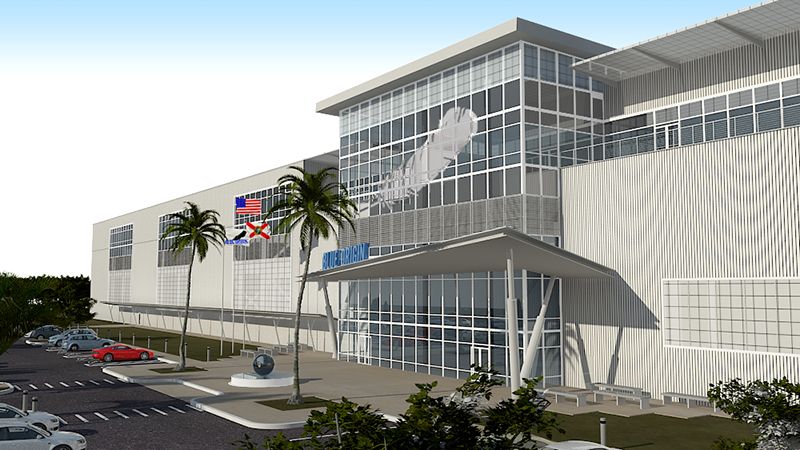
Blockchain World Government Through a DAO
Imagine a world of unison, unbridled innovation, and international cooperation beyond our wildest dreams, where democracy reins supreme, with each person a voice in every decision, if they so choose –like an election — except for every measure put into practice by the government. Now, imagine this on a global scale, where a world government comprised of elected officials is run through the blockchain and a Decentralised Autonomous Organisation (DAO).
Since the blockchain is a public ledger that can only grow, where the past cannot be changed (just as time cannot be reversed), and this most secure of all technologies allows for a unique private +public key to be associated with every human on the planet (which can be stored offline like a SIN card), all of a sudden, a new era would be upon us. We would no longer be the children waging wars and spats over insignificant issues, or disregarding the ways of diplomacy for unnecessary loss of life and turmoil. Along with a new birth certificate or with proof of 2 pieces of existing identification, we could all have a unique LIFE ID # assigned and voice how such a government would operate. Each decision — instead of the singular election of the decision makers — would be handled by the guardians of the system: each and every human on Earth. With contributions by every country, we could retain our national identity, whilst also recognising the planetary singularity we all share.
Because, after all, when we view the world from space, there are no borders. When we work together on projects like the Large Hadron Collider, we make groundbreaking discoveries like the God Particle, and even invent miniature black holes that evaporate, proving the truth of theories long-since-contested. It may be a scare to some, to have their world turned upside down, in a sense. It might make them feel as if they’re losing freedom, rather than gaining it, when the opposite is the real case. Hence why such a government could combine the voting on issues of a certain nation, and adhere only to those with a LIFE ID # in that geographical region, yet still allow for everyone to vote on issues when it affects the world as a whole. We could still retain our national identities, and the respective pride and voice in them, but we would become stronger as a species, and fund things that truly matter, with the combined wealth of all adding up to immense sums.
With sheer pennies allocated to the space industry, which has brought $1,000 to the economy for each dollar spent on it, we could use this newly-founded government to pay for a worldwide space program, where we share our technologies, and work towards the overall betterment of it, speed-setting the advancement of our species. Now, while the DAO that was recently the largest crowd-funded initiative in the world has had a rocky beginning, we can work out the kinks in the system, and fix the bugs that could lead to exploits.
Through combined efforts, we can build a blockchain application that fuels an irrefutably-authentic proposal/voting mechanism, where the choices affecting the world are made by the world.
To ensure that that the right decisions are made, and avoid a BREXIT-like issue, voting on proposals would need to surpass more than a single percent majority. It would need to involve a higher degree of confidence by the global society as a whole, such as a 60–66% favour of any referendums passed, rather than a measly 51%. This would ensure that those who forget to vote, or don’t get a chance to (for whatever reason), are not necessarily a cause for a drastic or minuscule change to be made, that lacks the best interests of the people at heart (although, the system would work best when the majority participate, which might involve some form of incentive mechanism — just as the bitcoin miners get paid fees for contributing their processing power to the network. A similar method could be put in place, albeit with minute processing power provided per device, so as to not drain battery power and have excessive internet usage, and no need for the entire blockchain to be downloaded (as such a task could take weeks or simply be impossible through mobile devices (the same devices that are often the only point of internet access for individuals in developing nations)).
Ultimately, it would take years of planning to put together the ‘perfect’ system, and even then, it wouldn’t be without its faults. But, it’s better than a world divided and uncooperative, especially at a time when we face the gravest problems on the grandest scale humanity has ever encountered. The rising and polluted oceans, the mass death of marine life, the changing climate, the unbeknown possibility of a grid-collapsing solar flare, or asteroid that renders electricity and computers to bricks, and/or devastates highly-populated regions with a mass impact… These problems are all solvable, and we can become a multi-planetary, space-fairing species, capable of defending our planet, and improving its ecosystems before the the 11th hour ends. Survival through adaptation and symbiosis with nature is crucial to our very existence. And collaboration through multi-national efforts is the cornerstone to the betterment the world needs, and the survival of humanity… Our future generations deserve a life to live. As such, I, for one, see no reason not to vote in favour of this ideology. Because we are one people, able to reach this guarded steeple to remain peaceful.
We are connected to our brothers and sisters across the cosmos. Our energy, our inner passions, our shared potential to live in unison — it does not stem from learning a new acceptance, but rather rediscovering our own roots as a species. We foraged in the early years, we lived amongst the plentiful variety of earth-dwellers. We have grown into our own exile, abandoning the posts of our olden days’ struggle-for-survival to a comfortable, modern lifestyle. It’s not all bad, for there is beauty in the discoveries science holds. But as a species, we need to remember our past failures (as a cautionary tale) if we ever want to evolve to see the cosmic atmosphere and survive as the years surpass. And to communicate and understand, overcoming our deep-rooted fears for things that are different. Because different shouldn’t be scary. We fear spiders and the dark because they have no match for what they are; spiders have nothing like them, and the darkness shields the naked eye from both friend and foe. But as we learn to see these fears in a different perspective, we realise that through technology and new ways of understanding, we can surpass our darkest moments and live a brighter day, piercing the overcast with the rays of our ambitions, and the feelings of a new warmth within our soul. For that is the goal of a connected world, through a global government made official, to be beneficial for all.
About the Author: View Michael Paton’s LinkedIn here: https://www.linkedin.com/in/michaelpaton or his Twitter here: https://twitter.com/YawLife or check out his other blog posts on Medium: https://medium.com/@YawLife
Feel free to discuss in the comments!!









